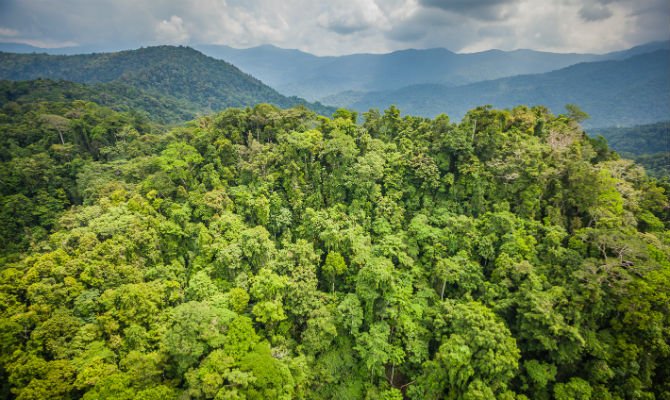Six weeks from now, more than 190 countries will meet in Paris to negotiate a binding climate agreement between nations. These super important discussions will dictate the future of our planet. Leading up to, during and after the Climate Negotiations aka COP21 (conference of the parties), you’re going to hear more and more about REDD+.
Nope, I’m not talking about Bono’s anti AIDS campaign (RED) or Mountain Dew’s cherry flavored Code Red soda (RIP), OR about REDD’s Apple Ale.. I’m talking about one of the most effective ways to combat climate change. I’m talking about a tangible and easy solution to saving the threatened forests of the world. A way to reduce emissions, protect wildlife and uplift impoverished communities ALL AT THE SAME TIME. I’m talking about REDD+. (Sorry I know, NGOs just LOVE those acronyms, but this one is important to know, I promise.)
REDD+ is a United Nations envisioned climate change mitigation strategy that when implemented can quickly reduce millions of tonnes of CO2 emissions and deliver significant benefits to local landowners and forest communities, as well as the wildlife that inhabits the forest areas. And guess what?? It works!

Here’s some REDD+ 101:
REDD+ stands for Reducing Emissions from Deforestation and Forest Degradation, and was created under the United Nations Framework Convention on Climate Change in 2007. Long story short, it’s a nifty tool to value the carbon storage services of the world’s remaining tropical forests. Which by the way are being cut down at ALARMING rates. (We cut down THREE BILLION trees every single year. That’s an area the size of New York City every two days.) The destruction of forests is causing more than 7 BILLION tonnes of CO2 emissions going into our atmosphere each year which is a major contributor to climate change.
Why should you care?
Climate Change is the most critical issue facing humankind today. Don’t believe me? Ask the world’s leading climate scientists at the IPCC (International Panel on Climate Change). They have warned us repeatedly that if society doesn't figure out how to reduce 17 billion tonnes of emissions annually by the year 2020, the planet will face the catastrophic effects of climate change with exponential frequency, increasing intensity and high damage and cost to society.
And please note, climate science is not a matter of opinion, politics or dogma. It is FACT and there’s no time left to waste on debating whether it's happening or not or whose fault it is. Inaction is not an option. Complacency is out of the question. Global citizens are NOT a generation of bystanders, right??
Since the start of human civilization humanity has cut down almost half of the world’s trees. Deforestation accounts for roughly 15% of global annual greenhouse gas emissions. Pumping more CO2 into our atmosphere than the ENTIRE GLOBAL TRANSPORTATION SECTOR. So, protecting the threatened forests of the world is essential if we, as global citizens, want to solve the imminent problem of climate change. We won't win this battle unless we do. The Guardian published an article recently that breaks it down:
“When tropical forests are cut and left to decay or are burned, as happened on an area almost twice the size of Costa Rica last year, the carbon stored in leaves, branches, trunks, roots and soil is released into the atmosphere. For many forest-rich developing countries, deforestation, not fossil fuel use, is the major source of emissions. If tropical deforestation were a country, it would rank somewhere between China and the European Union as a source of current annual greenhouse gas emissions. So halting deforestation would be a giant step toward taming climate change.”
So how exactly does the REDD+ model work?
By making forests more valuable standing than cut down, the REDD+ mechanism provides forest communities and countries with an awesome model for economic development where both people and the planet can benefit.
REDD+ projects are implemented by private companies and NGO's who work with communities to implement sustainable land use and forest conservation plans that bring benefits to the landowners and forest communities.
Once the work is done, and the project can prove to an outside auditor that it has stopped the deforestation and brought meaningful benefits to the community, the project is awarded certificates or Verified Emission Reductions (VERs) that represent proof that CO2 emissions have successfully been avoided from going into the atmosphere.
What are the benefits of REDD+?
"Forests play a fundamental role in combating rural poverty, ensuring food security and providing people with livelihoods.” -FAO Director-General
The benefits of REDD+ go beyond emissions reductions and include forest conservation, sustainable economic development, and biodiversity preservation. REDD+ funding already has been used to, among other things, build schools and medical clinics, dig clean-water wells, and train and equip forest rangers to prevent illegal logging and animal poaching.
This happens because the money from the sale of Verified Emission Reductions is generously shared with local landowners and forest communities to fund sustainable local development. And as mentioned before, REDD+ helps communities recognize the economic value that standing forests provide, and not only stops deforestation, but gives indigenous and forest communities the opportunity to develop in a more sustainable way.
So, how can you get involved??
Well, now that you know that deforestation is one of the leading causes of climate change, that it's happening at alarming rates, and that protecting the forests of the world will be critical in the fight to stop climate change.. you can agree that global citizens should probably protect said forests, right?
Global citizens can do something to combat climate change by joining the Stand for Trees campaign.
Remember, trees stand for us. It’s time we stand for trees.